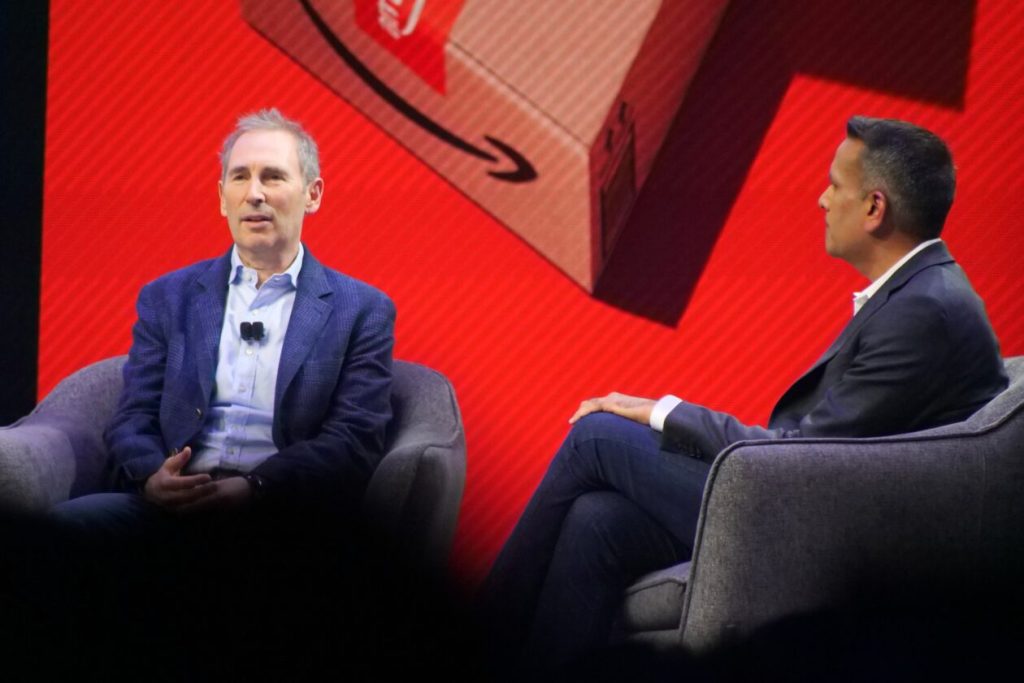Amazon’s AI Revolution for Sellers: Partnership or Power Play?
In a significant move to strengthen its relationship with third-party sellers, Amazon CEO Andy Jassy unveiled a suite of new agentic AI tools at the company’s annual Accelerate seller conference in Seattle. These advanced technologies aim to transform how independent merchants—who generate more than 60% of Amazon’s online retail sales—operate their businesses on the platform. Speaking to a crowd of sellers gathered just blocks from Amazon’s headquarters, Jassy characterized the 25-year relationship between Amazon and its marketplace sellers as “probably the most compelling and substantial collaboration in the history of retail.” The new AI tools represent Amazon’s latest effort to demonstrate its commitment to empowering the millions of businesses that have built their livelihoods on its marketplace, while simultaneously showcasing the company’s technological capabilities in an increasingly competitive AI landscape.
The centerpiece of Amazon’s announcement involves significant upgrades to its Seller Assistant and Creative Studio platforms, designed to act as proactive partners rather than passive tools. Unlike previous AI implementations that simply responded to seller requests, these new agentic systems can monitor inventory levels, anticipate demand shifts, flag compliance issues, and even take action on behalf of sellers (with their permission). The enhanced Creative Studio functions as a built-in creative partner, helping sellers research products and audiences, brainstorm concepts, draft storyboards, and generate complete video and display ad campaigns through natural-language conversations. “Rather than clicking a button, you’re actually able to have a natural-language conversation with a creative partner that is working with you to help you achieve your goals,” explained Jay Richman, Amazon’s vice president of creative products and technology for Amazon Ads. Similarly, the upgraded Seller Assistant can actively monitor inventory, recommend pricing strategies, and—with seller approval—prepare shipments, schedule replenishment, or adjust listings directly through Amazon’s systems.
What makes these tools particularly powerful is how they combine broad AI capabilities with seller-specific context. Amazon is powering these innovations with its Nova AI foundation model and Anthropic’s Claude 4, integrating deep knowledge about shopping behaviors and successful seller strategies with real-time information about each seller’s specific situation. “It’s not just some generalized knowledge or generalized capability from all the history. It is tailored to their specific situation,” said Dharmesh Mehta, Amazon’s vice president of selling partner services. For example, the system can create tailored inventory recommendations for a holiday-focused business, suggesting exactly how many units to send to Amazon’s fulfillment centers based on historical patterns and current market conditions. If approved by the seller, the AI can then schedule and facilitate the shipments, creating shipping labels and handling logistics details. This combination of broad intelligence with personalized context represents a significant leap beyond traditional generative AI tools, enabling far more sophisticated assistance for sellers navigating Amazon’s complex marketplace.
Despite these technological advancements, the relationship between Amazon and its sellers remains complicated. Many merchants see a dual reality: access to Amazon’s massive customer base comes with rising costs, restrictive policies, and perceptions of unequal treatment, as reflected in various independent surveys. The conference unfolds against the backdrop of an ongoing FTC antitrust case alleging that Amazon has illegally leveraged its power over third-party sellers—allegations the company strongly denies. Bloomberg News recently reported that the FTC is also investigating whether Amazon provided sufficient disclosures about pricing for search ads, which are heavily used by marketplace sellers. These tensions highlight the power imbalance inherent in the relationship: Amazon creates and controls the rules of its marketplace, while sellers must adapt to maintain their access to customers.
The implementation of these new AI tools also raises important questions about data privacy and competitive dynamics. Amazon has faced past accusations of mining seller data to launch competing products—allegations it has consistently denied. With the new AI systems, Mehta emphasized that Amazon has been careful not to train its models with seller-specific data, instead aggregating broad trends and insights while keeping individual seller information siloed. “That’s really important for privacy,” Mehta noted, acknowledging that no seller would want their confidential information used to benefit competitors. This approach aims to build trust with sellers, encouraging them to permit the AI to act on their behalf. However, the effectiveness of these privacy safeguards remains to be tested in practice, especially given Amazon’s dual role as both platform provider and competitor to many of the merchants it hosts.
The financial stakes underlying this relationship are enormous for both Amazon and its seller community. According to company data, U.S.-based independent sellers averaged more than $290,000 in annual sales in 2024, with over 55,000 merchants exceeding $1 million. For Amazon, revenue from third-party seller services—including commissions, fulfillment fees, and related offerings—reached $156 billion last year, representing nearly a quarter of its total $638 billion revenue. Yet Jassy revealed that this cornerstone of Amazon’s business model almost never happened, as the company initially debated whether third-party merchants could maintain its brand and customer service standards. After weeks of deliberation 25 years ago, Amazon ultimately decided that more sellers would benefit customers through better selection and lower prices. “What we’re doing together is very unusual,” Jassy told the assembled sellers, predicting that the new AI tools would make the collaboration even more successful. “I still think it’s very early days.” Whether these innovations truly represent a more equitable partnership or simply reinforce Amazon’s marketplace dominance remains to be seen, as sellers navigate the opportunities and challenges of these powerful new AI assistants.


